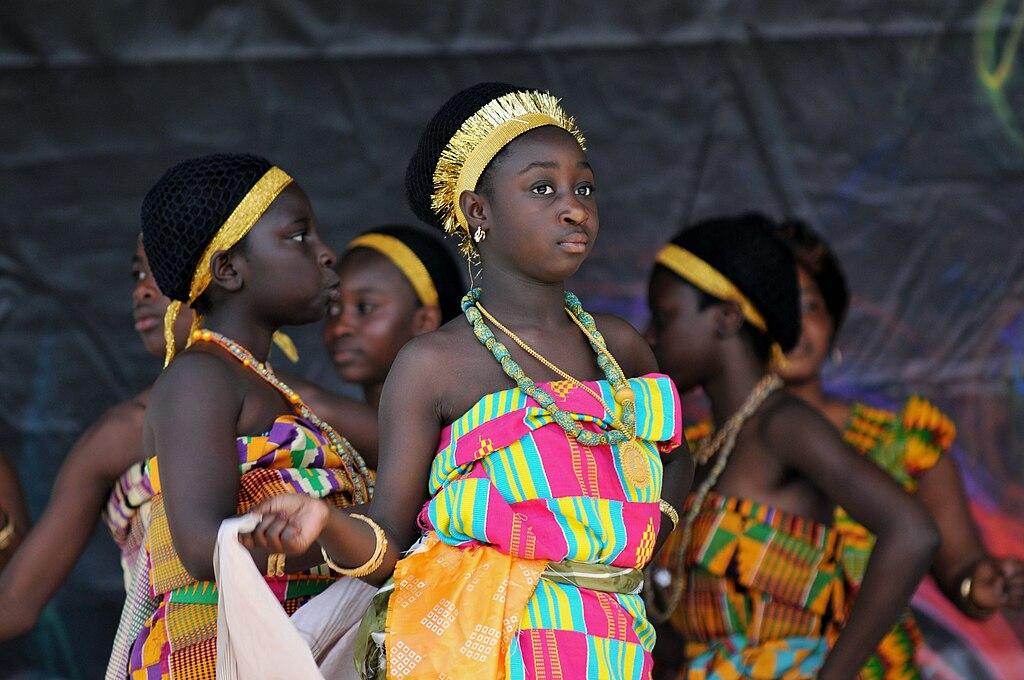H1: Unveiling Ghana’s Rhythmic Legacy: Exploring the Allure of Ghanaian Dance
Introduction
Ghana, the throbbing heart of West Africa, is a vibrant tapestry of cultural expressions. Among its many treasures lies a rich dance heritage that has captivated generations. Ghanaian dance is an embodiment of the nation’s soul, reflecting its history, traditions, and beliefs. This article delves into the mesmerizing world of Ghanaian dance, exploring its origins, rhythms, and cultural significance.
A Tapestry of Rhythms
Ghanaian dance is a kaleidoscope of rhythms, each with its own distinct character and purpose. The intricate footwork, complex hand gestures, and pulsating drumbeats combine to create a symphony of motion.
- Adowa: A stately dance performed at royal courts and festivals,characterized by its slow,graceful movements.
- Agbadza: An energetic dance associated with the Ewe people, known for its rapid footwork and energetic body movements.
- Borborbori: A playful dance performed by the Ga people, featuring rhythmic hip movements and shoulder shrugs.
- Kpanlogo: A popular dance originating from the coastal regions, known for its fast-paced steps and lively drumming.
Cultural Significance
Ghanaian dance is not merely entertainment; it is an integral part of social, religious, and ceremonial life.
- Ritual and Ceremony: Dances play a significant role in festivals, funerals, and religious ceremonies, connecting the community with its ancestors and the spirit world.
- Storytelling: Through dance, stories are passed down through generations, depicting historical events, cultural values, and moral lessons.
- Community Bonding: Dance brings people together, fostering a sense of belonging and collective identity.
- Cultural Preservation : Ghanaian dance serves as a vital means of preserving and transmitting cultural traditions.
The power of Drumming
Drums are the lifeblood of Ghanaian dance,providing the rhythmic foundation and driving the movements.
- Various Types of Drums: Each ethnic group has its own distinct set of drums, ranging from the large, bass-heavy atumpan to the smaller, higher-pitched gyil.
- Drumming Patterns: Drummers follow complex patterns that interact with dancers’ movements, creating a mesmerizing fusion of sound and motion.
- Ensemble Playing: Drumming is often performed in ensembles,with each drummer playing a specific role within the rhythmic tapestry.
Benefits of Ghanaian Dance
In addition to its cultural significance, Ghanaian dance offers numerous benefits:
- physical Fitness: Ghanaian dance is an excellent form of exercise, providing a full-body workout that improves flexibility, coordination, and cardiovascular health.
- Cultural Gratitude: Learning and performing Ghanaian dance fosters an appreciation for the country’s rich cultural history.
- Emotional Expression: Dance allows individuals to express their emotions and connect with their inner selves.
- Social Interaction: Dance classes and workshops provide opportunities for socialization and community building.
Practical Tips for Dance Enthusiasts
For those eager to experience the allure of Ghanaian dance firsthand,consider the following tips:
- Attend dance Classes: Look for classes offered by experienced Ghanaian dance instructors in your area.
- Participate in Workshops: Immerse yourself in the dance form by attending workshops led by renowned Ghanaian dancers.
- Visit Ghana: To fully appreciate the vibrant dance scene, visit Ghana and attend cultural performances or join customary dance groups.
- Learn Basic Steps: start by learning the basic steps for different dance styles, focusing on rhythm and coordination.
- Be patient: Mastering Ghanaian dance requires patience and practice. Don’t be discouraged by setbacks and embrace the learning process.
Case Studies
- The Dance of the Ancestors: Explore the ritualistic dance performances of the Ashanti people, where dancers connect with their ancestors through intricate movements and sacred drumming.
- kpanlogo Drumming in the Volta Region: Witness the dynamic drumming and lively dance style of the Kpanlogo tradition in Ghana’s coastal communities.
First-hand Experience
“As a foreigner who fell in love with Ghana, the dance has become an inseparable part of my life. The rhythmic energy, the storytelling, and the sense of community ignite something within me that no other experience can match.” – [Share a personal story about the impact of Ghanaian dance on your own life]
Conclusion
Ghana’s dance heritage is a symphony of rhythms, colors, and emotions. It is a living testament to the country’s vibrant culture and its enduring connection to its past. Whether witnessed in a traditional setting or performed by a contemporary dance ensemble, ghanaian dance captivates hearts and invites all who experience it to embrace its infectious rhythms.

